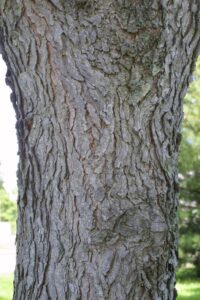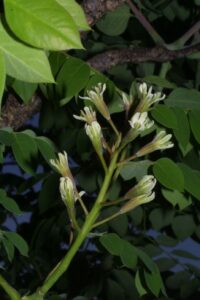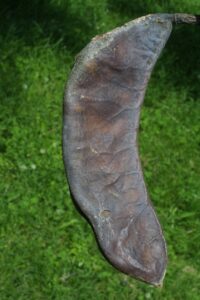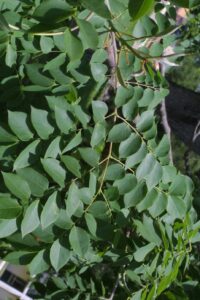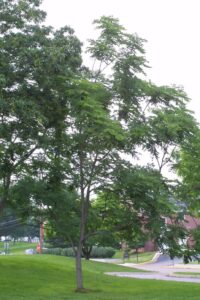Botanical Name:
Gymnocladus dioica
Family Name:
Fabaceae
Description:
Kentucky coffeetree is medium to large deciduous tree with an open, rounded crown when in open areas, but narrower with fewer branches in wooded sites. It has bipinnately compound leaves with elliptical to ovate leaflets and pointed tips. The leaves are the largest of all our native trees, measuring up to 3 feet long and 2 feet wide. Fruits are stout 4-10-inch pods with thick walls, hard-shelled seeds, and sticky pulp.
Size:
60-75’ tall; 40-55’ spread
Habitat and Range:
The range of Kentucky coffeetree extends from southern Ontario, Ohio, and southern Michigan southwest through Missouri and eastern parts of Kansas and Oklahoma. It traditionally was found mostly in fertile bottomlands and open wooded hillsides but is adaptable to a wide variety of conditions including many urban environments. It is considered rare in its native habitat, possibly due to the lack of suitable seed dispersers.
Attributes:
Kentucky coffeetree has separate male and female trees. Flowers are in fragrant, greenish-white clusters. The leaves turn yellow in the fall, and the seedpods often remain on the tree through the winter.
Wildlife Value:
Because of the toxins contained in the tree tissues, wildlife generally do not eat Kentucky coffeetree leaves or fruits.
Did you know?
• Roasted seeds were reportedly used as food by Native Americans and as a coffee substitute by European settlers, but proper preparation is needed, as the seeds contain toxic alkaloids.
• The name Gymnocladus, from the Greek meaning naked stems, describes the stout twigs that remain leafless for nearly half of the year.
Benefits to Our Community (based on carbon dioxide sequestered, storm water runoff avoided, and air pollution removed each year):
Over the next 15 years, this tree will give back $90 worth of benefits to our community.
